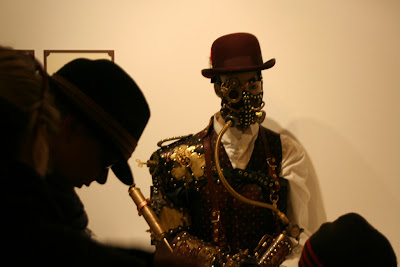Older pneumatic tube systems have long been associated with steampunk culture - all those knobs and brass and gorgeous ornate, futuristic detailing:


I have always liked this aesthetic dimension to pneumatic tube systems, an aesthetic that was first introduced to me by my sister's partner Jarek. What has prompted me to write about it today are two publications: the most recent edition of Neo-Victorian Studies, completely devoted to the topic; and a series of blogposts by lord_k on Dieselpunks, here, here and here. The latter is a well-researched essay in three parts, filled with photos and the mention of a number of books and films where pneumatic tubes are actors (many added to my reading list).
Contemporary hospital pneumatic tube systems have retained little of the steampunk vibe, with all of their plastic and duct-tape-able parts. But the fact that these systems are now computerised does not necessarily prevent a few steampunk elements being introduced (see this steampunk workshop site for a fantastic post about how to build a steampunk computer).
Contemporary hospital pneumatic tube systems have retained little of the steampunk vibe, with all of their plastic and duct-tape-able parts. But the fact that these systems are now computerised does not necessarily prevent a few steampunk elements being introduced (see this steampunk workshop site for a fantastic post about how to build a steampunk computer).
For those interested in medical museums, Thomas Söderqvist has written about steampunk medical objects on his blog Biomedicine on Display, and there is a current exhibition at the The Charles River Museum of Industry and Innovation and past exhibition at the Museum of the History of Science worth checking out.
Images from wikimedia commons, flikr (falling_angel) and steampunk workshop.



No comments:
Post a Comment